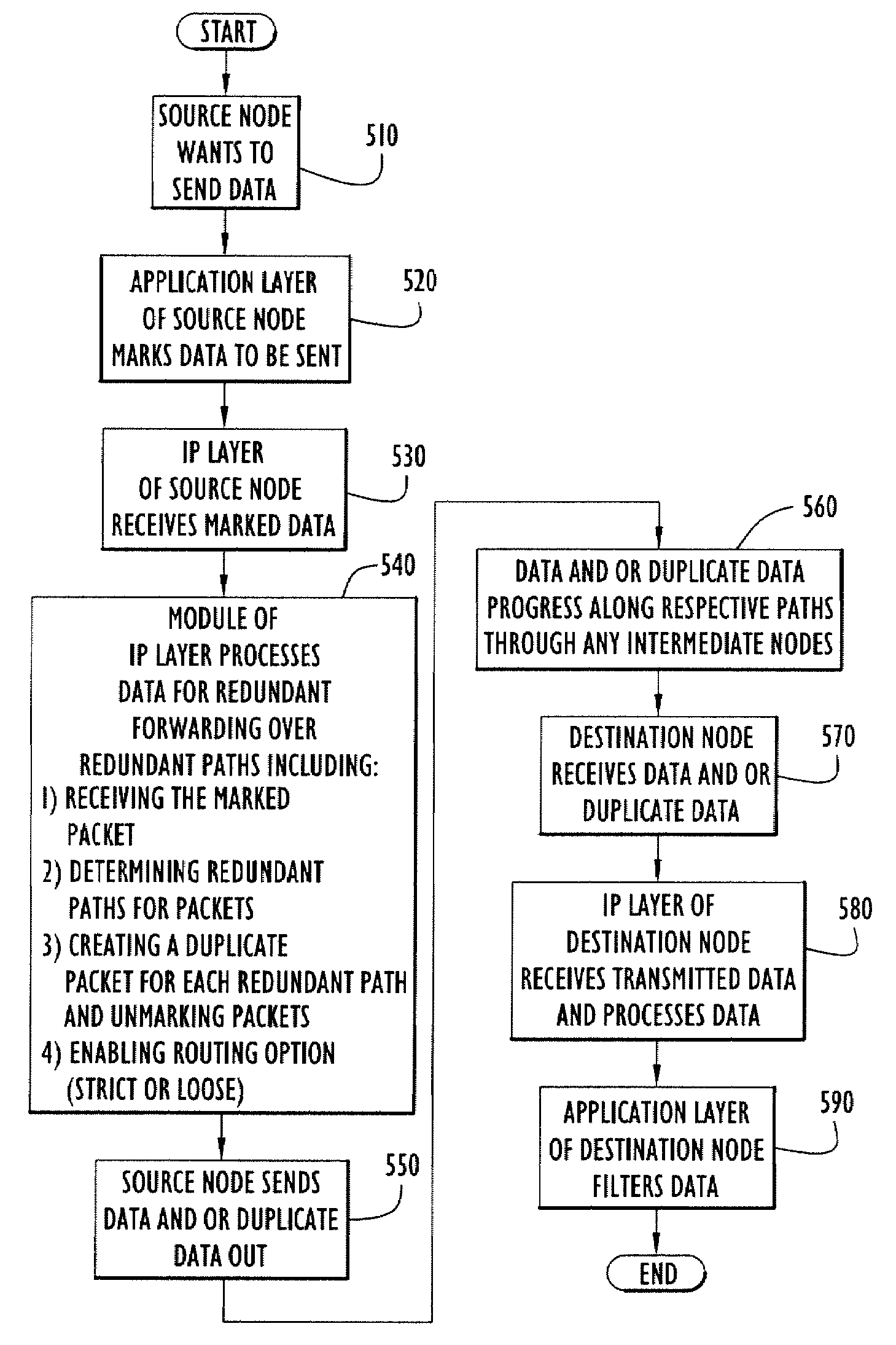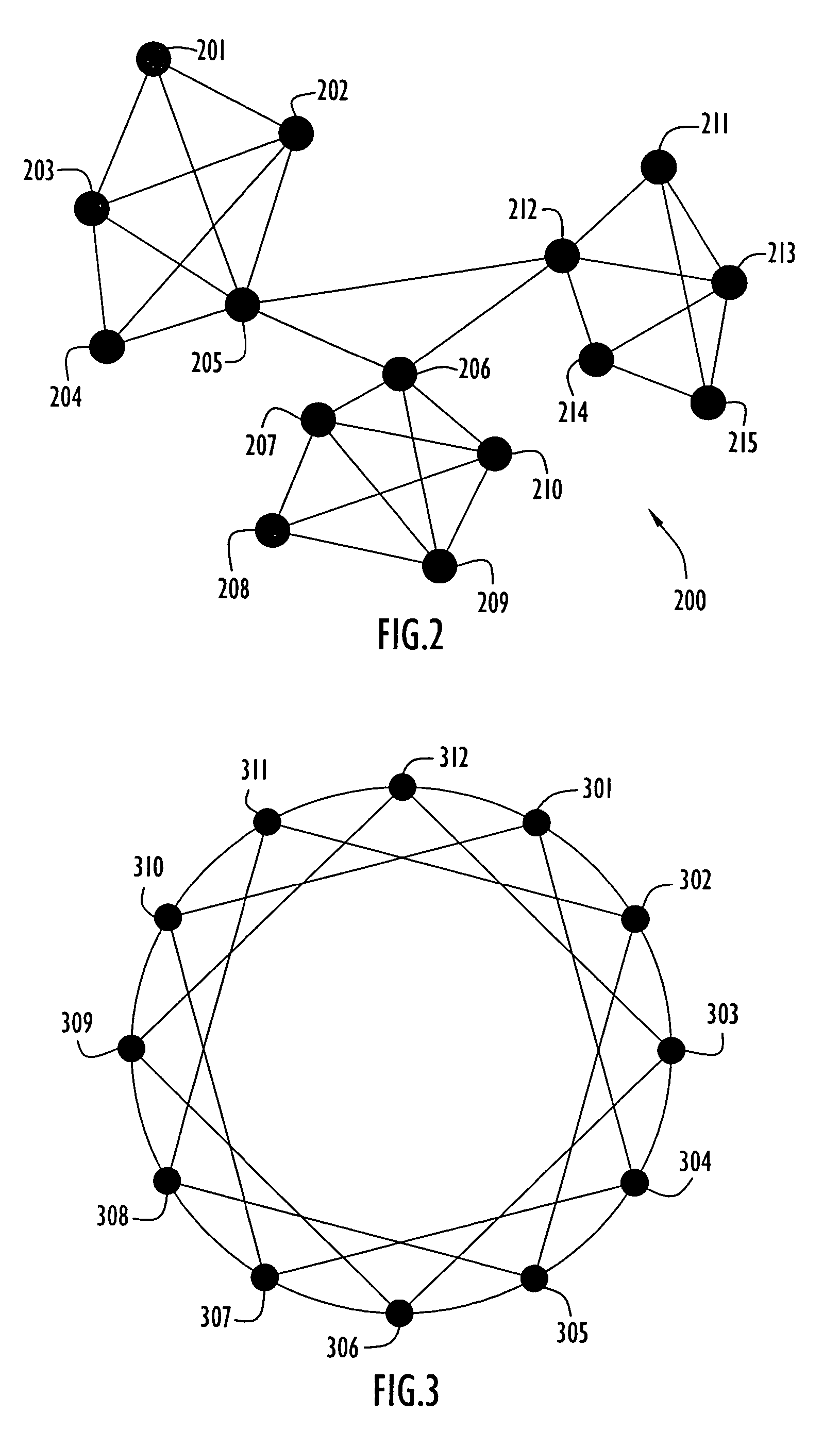Method and system for transferring data in a communications network using redundant communication paths
a communication network and data technology, applied in data switching networks, frequency-division multiplexes, instruments, etc., can solve the problems of increasing message delivery time, packets to be undelivered, and significant time intervals can pass prior, so as to reduce packet delivery time, minimize overlap, and improve packet delivery reliability
- Summary
- Abstract
- Description
- Claims
- Application Information
AI Technical Summary
Benefits of technology
Problems solved by technology
Method used
Image
Examples
Embodiment Construction
[0027]The present invention simultaneously transfers plural copies of packets or data over different paths in a network to increase delivery reliability. Specifically, a network node of the present invention automatically transmits an original and a corresponding duplicate packet to a destination simultaneously over respective primary and secondary communication paths to improve reliability of packet delivery and shorten delivery time. The node uses conventional communication and / or routing protocols to route the packets and selects routes using criteria to minimize overlap between primary and secondary communication paths. The node preferably employs the protocol stack described above for FIG. 1. A routing agent module within the IP protocol stack layer of a present invention source node duplicates and routes packets over the selected communication paths as described below.
[0028]The network layer of a present invention node preferably utilizes the conventional Internet Protocol (IP...
PUM
 Login to View More
Login to View More Abstract
Description
Claims
Application Information
 Login to View More
Login to View More - R&D
- Intellectual Property
- Life Sciences
- Materials
- Tech Scout
- Unparalleled Data Quality
- Higher Quality Content
- 60% Fewer Hallucinations
Browse by: Latest US Patents, China's latest patents, Technical Efficacy Thesaurus, Application Domain, Technology Topic, Popular Technical Reports.
© 2025 PatSnap. All rights reserved.Legal|Privacy policy|Modern Slavery Act Transparency Statement|Sitemap|About US| Contact US: help@patsnap.com



